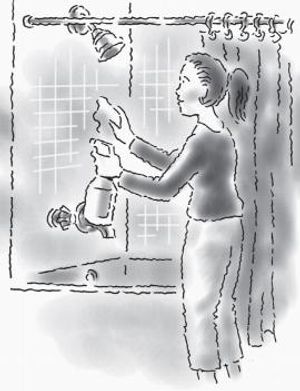In an age of droughts, water shortages and intensified eco-awareness, long, luxuriant showers are a thing of the past, right? In fact, lots of people still take long showers, especially considering that in terms of water usage, 10 minutes is pretty long.
In the developed world, water doesn't cost all that much money. The water for a daily, 10-minute shower only runs about $20 a year in the United States [source: NCCES]. The electricity to heat it costs about $60 to $80 a year-- not a huge chunk of an electric bill [source: NCCES]. But a daily, 10-minute shower does cost a whole lot of precious, life-sustaining, crop-watering H2O.
Advertisement
A regular showerhead uses about 5 gallons (19 liters) of water per minute, so a 10-minute shower uses 50 gallons (190 liters) of water [source: NCCES]. That's a bathtub's worth of water. Switch to a standard low-flow, water-saving showerhead, and you're down to about 2.5 gallons per minute, or 25 gallons for that 10-minute shower [source: NCCES]. That's still using more water in a single shower than many families in rural Africa consume in a whole day [source: CCF].
The problem is, shampooing, conditioning and soaping up takes time (especially if you have long, thick hair). Add in any additional shower treatments, like steam-activated cleansing masks, medicated shampoos that have to sit, or a thorough loofah scrub, and 10 minutes seems like a positively quick shower. Twenty minutes under the water is far from unheard of (especially at 6 a.m. on a cold morning). It passes faster than many of us realize.
So, how do you reduce a 100-gallon shower routine to one that uses 25 gallons, or even just 15 gallons? Awareness goes a long way. So does inconvenience.
In this article, we'll look at an invention called Aqualim (as in, "water limiter"). It's a showerhead attachment that incorporates awareness and inconvenience into a device the inventor says successfully cut his teenage daughters' shower time in half.
While there are a bunch of shower-monitoring devices out there, Aqualim takes a different approach to the problem.
Advertisement














